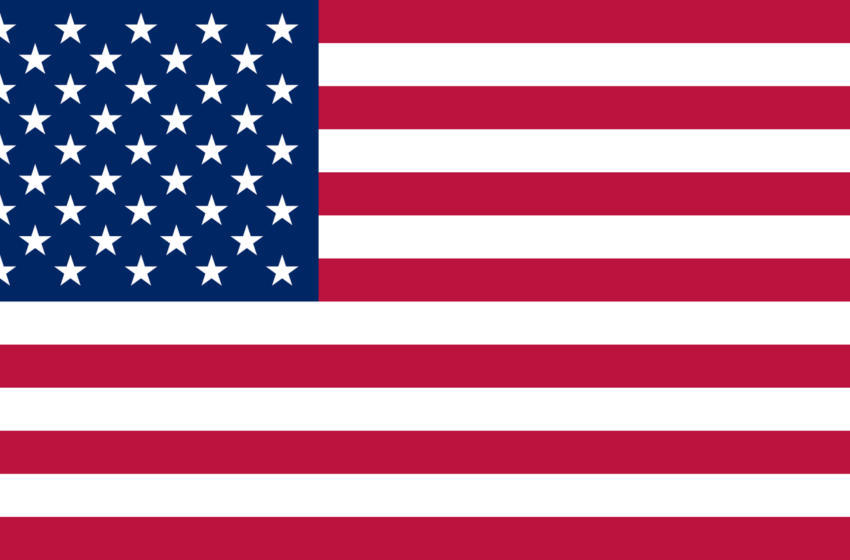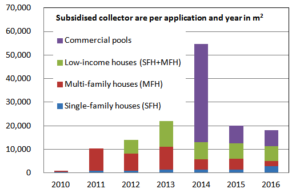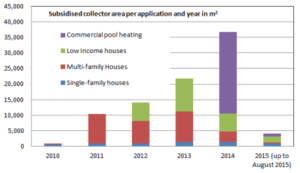USA: California Solar Initiative to Add Technologies to Eligibility List
June 13, 2013
The California Solar Initiative (CSI) is further extending the number of system types eligible for its CSI – Solar Thermal programme. Already in December 2012, California’s Governor, Edmund Brown, signed a law stipulating that solar heating of commercial pools is to be incorporated into the subsidy scheme. In March 2013, the California Public Utilities Commission (CPUC) published the Final Decision, specifying that solar cooling, space heating and process heat systems should be eligible technologies within the CSI – Solar Thermal. The CPUC, however, still has to work out the specific rule set, something which might delay implementation. The pie chart shows the share of system suppliers within CSI by the end of May 2013. By then, the programme’s administrators had received 1,400 grant applications, half of which had included the system supplier’s name.
Californian collector manufacturers Sunearth and ACR Solar (formerly Solarroofs) are leading the ranking. Solahart, a manufacturer from Australia, delivered 10 % of the systems and therefore was the largest importer within the subsidy scheme. Altogether, the Californian market is highly diversified, as 29 system suppliers have profited from the programme so far.
The following table shows the distribution among the three eligible application types: Systems for multi-family and commercial buildings already outperformed the ones in single-family homes. The majority of the installations could be found in the retrofit category. With regard to multi-family buildings for low-income earners, however, every fifth building with a solar water heater was a newly constructed one.
| Single-family | Multi-family low income | Multi-family and commercial | |
| Total number of applications submitted by 29 May 2013 | 680 | 312 | 409 |
| Number of applications for newly built dwllings | 38 | 58 | 74 |
| Share of new buildings | 6 % | 19 % | 18 % |
Source: Online excel list of submitted applications on https://www.csithermal.com/ (programme information)
Commercial pools have a great potential in California. “There are 45,968 commercial pools in California, which includes public ones, as well as pools in schools, hotels, health clubs, multi-family buildings and non-profit corporations so called Home Owner Associations (HOA),” Ed Murray, CEO and President of Californian system supplier Aztec Solar, emphasised during a presentation in San Jose, California, in February this year. A public debate between the Program Administrators (PAs) on one side and the California Solar Energy Industries Association (CALSEIA) and the Division of Ratepayer Advocates (DRA) on the other has lasted for months, with different comment papers being written by both sides.
A compromise seems to have been found regarding the level of incentives. In the latest comments from 24 May 2013, CALSEIA agrees that the 7 USD per annual therm incentive level proposed by the PAs “will be adequate to incentive most prospective projects” (see the attached document). CALSEIA quotes the years-long experience of the solar pool heating industry that building owners and managers would usually choose not to make such expenditures unless the return on investment was five years or less. “7 USD per annual therm displaced will achieve this goal in most cases,” CALSEIA is convinced (1 Therm = 100,000 BTU = 29.3 kWh). Solar water heating systems in multi-family houses receive 14.53 USD per therm displaced. The final decision about the incentive amount will be made by the CPUC.
In the Joint Implementation Plan from 8 May, the PAs propose to “incorporate the TRNSYS swimming pool Type 344 indoor and outdoor pool model into the existing calculator for use by solar pool heating systems.” The calculator should be embedded in the multi-family / commercial application database similar to the existing commercial calculator.
The PAs, however, disagree with CALSEIA’s recommendation to cap incentives for pool heating applications at 50% of the project costs. They believe that “an incentive cap will create a disincentive for cost declines”, which is a major objective of the CSI – Solar Thermal. The Programme Administrators suggest in the final comments from 31 May: “If it is determined that solar pool incentives are too high, the PAs request the ability to reduce the incentive amount by way of a Tier 2 advice letter.”
What are the steps in the final implementation phase? “The CPUC will issue a draft decision on pools sometime in the next few weeks. Then, there will be a 20-day comment period, followed by a 5-day reply comment period,” explains Les Nelson, Interim Executive Director at CALSEIA. “We expect the final decision sometime in July, most likely.” This will be the start of the even more complex public debates about the second part of the extension regarding process heat, solar cooling and space heating.
More information:
The excel file with all submitted applications can be downloaded at https://www.csithermal.com/ (programme information)
http://www.dra.ca.gov
http://www.cpuc.ca.gov/PUC/energy/Solar/
http://www.gosolarcalifornia.ca.gov/
http://www.solarroofs.com/
http://www.sunearthinc.com
http://www.calseia.org
http://www.aztecsolar.com

